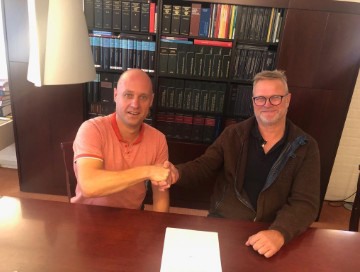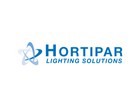"If I were a Dutch grower, I would rather emigrate sooner than later," says Aad van Ruijven of Hortipar. The reason? “The prices that American growers receive for their product are much higher than in the Netherlands, which makes it much easier over there to invest in lighting. The payback period (3-4 years) is half as long as in the Netherlands. That is also reflected in the market, where one after another large-scale greenhouse horticulture project with lighting is being built, like recently AppHarvest.”
 Over the years, the focus of Hortipar, a Dutch lighting installation company, has increasingly shifted to abroad. The United States is the most important market for the company. Aad can be found there for a week in every month. Recently on behalf of Dutch Growing Solutions, a joint venture with Dutch GST Tuinbouwtechniek. At the beginning of October, Aad (right) and Gert-Jan van Geest symbolically shook hands and the joint venture became a fact.
Over the years, the focus of Hortipar, a Dutch lighting installation company, has increasingly shifted to abroad. The United States is the most important market for the company. Aad can be found there for a week in every month. Recently on behalf of Dutch Growing Solutions, a joint venture with Dutch GST Tuinbouwtechniek. At the beginning of October, Aad (right) and Gert-Jan van Geest symbolically shook hands and the joint venture became a fact.
Operation independent of third parties
Aad explains why that joint venture is necessary. “We have been providing the complete lighting package for growers for years, from advice on choosing the right type of lighting and fixture, engineering for the complete cabling, prefab installation of the cabling, installing the fixtures up to building the panels ourselves, transport, and, that is quite unique, own assembly on American soil. The latter simply cannot be done by a foreign company. The rules are different, stricter and because, as a Dutch person, you are not allowed to work there, you need an American subcontractor.”
In recent years, Hortipar has consistently worked with the same subcontractor. "And we supply three supervisors to guide the process, give advice and provide the necessary tricks that go with the installation of complex lighting installations."
Now that the projects in the United States are becoming larger, the moment arrived that Hortipar could no longer run the risk of not being completely in control. “It is no longer possible to depend on a sole subcontractor. And just looking for another one, that is simply not done when you as a company have to give a five-year warranty on an installation. That installation has to be good in any case. "
Own installation branch
Step by step they worked towards their own installation branch, called Dutch Growing Solutions where two people started to work. “Hortipar advises, Dutch Growing Solutions does the engineering and then Hortipar takes over the process again. As Hortipar, we are no longer dependent on third parties and we can grow together with it."

Growing with Equilibrium, for example, a large investor who finances several greenhouse horticulture projects. “We have recently become a preferred supplier. Equilibrium also wants to tie parties and does not want to depend on constantly changing installers. Many installers are moving to the cannabis market, away from the greenhouse vegetables. We deliberately do not do that, because I think that that specific market may just be finished in a few years' time.”
The latter is not to be expected in the greenhouse vegetable market in the United States, quite the contrary. “The United States is bursting with space to build greenhouses and it is increasingly recognized that greenhouse horticulture is a sustainable solution. For example for the water problem, one of the reasons why ‘state of the art Dutch greenhouses’ are promoted considerably. "
Local-for-local is also a real trend, Aad observes. "But only according to American standards, so a radius of 250 kilometers is already ‘close’. For a Dutchman to understand that, it takes adjusting."
For more information:
Hortipar
www.hortipar.nl
Aad van Ruijven
[email protected]
Dutch Growing Solutions
LinkedIn










